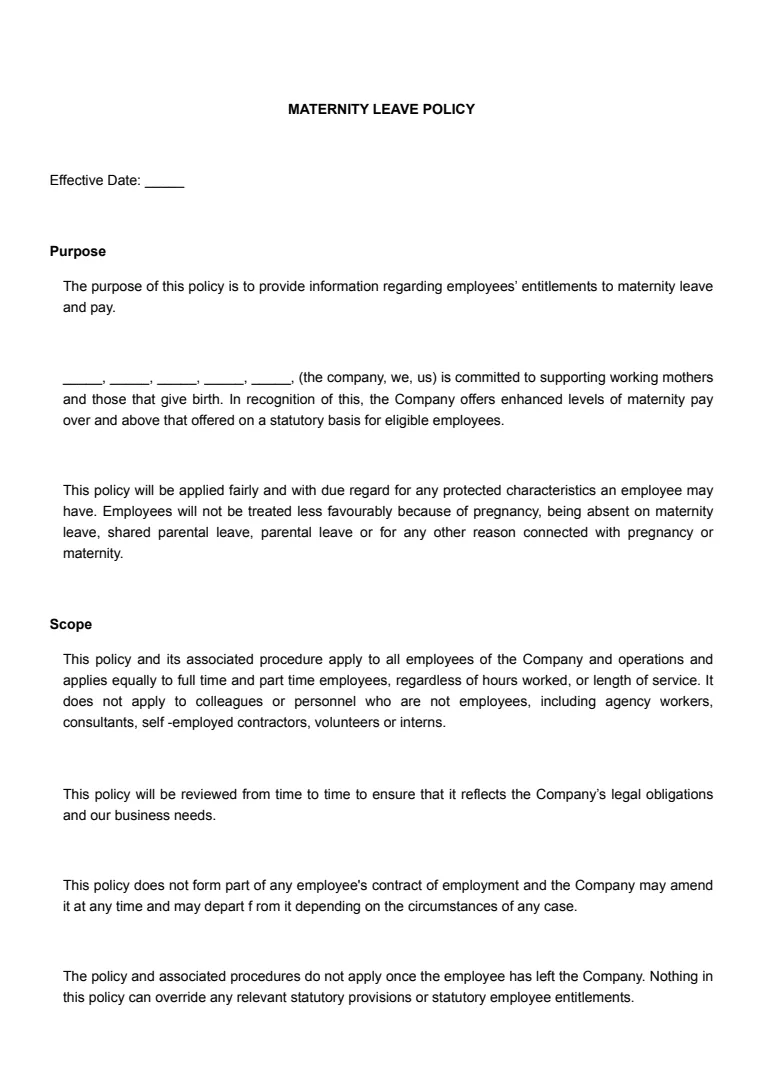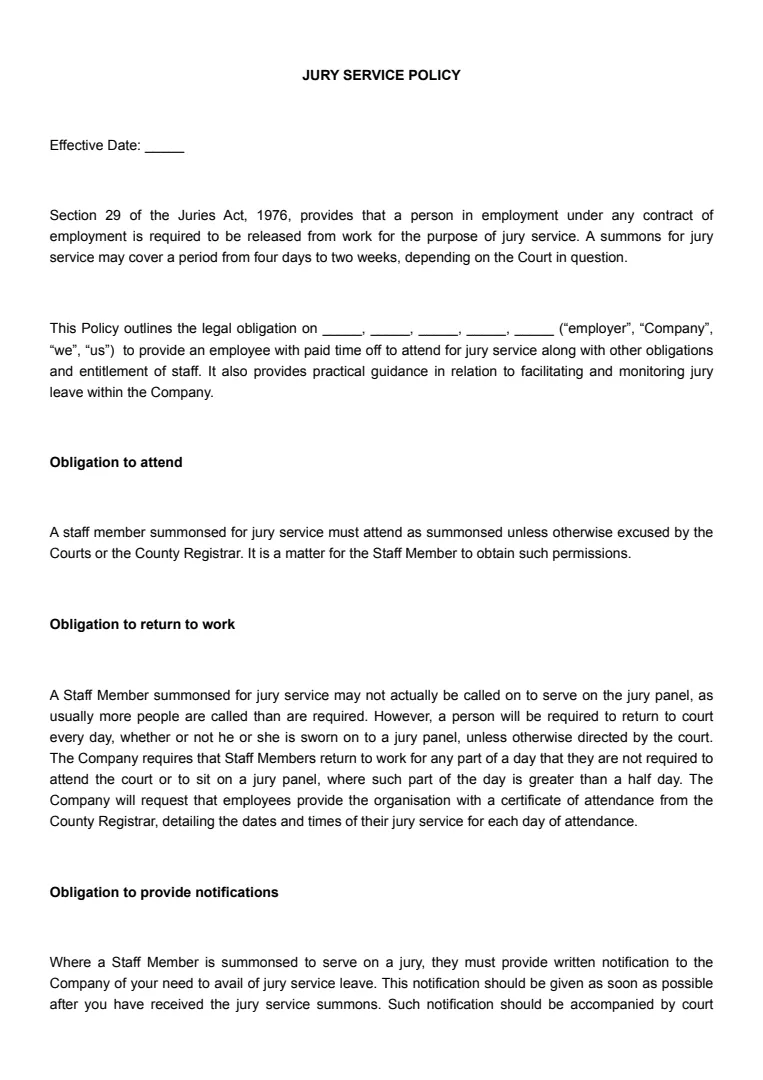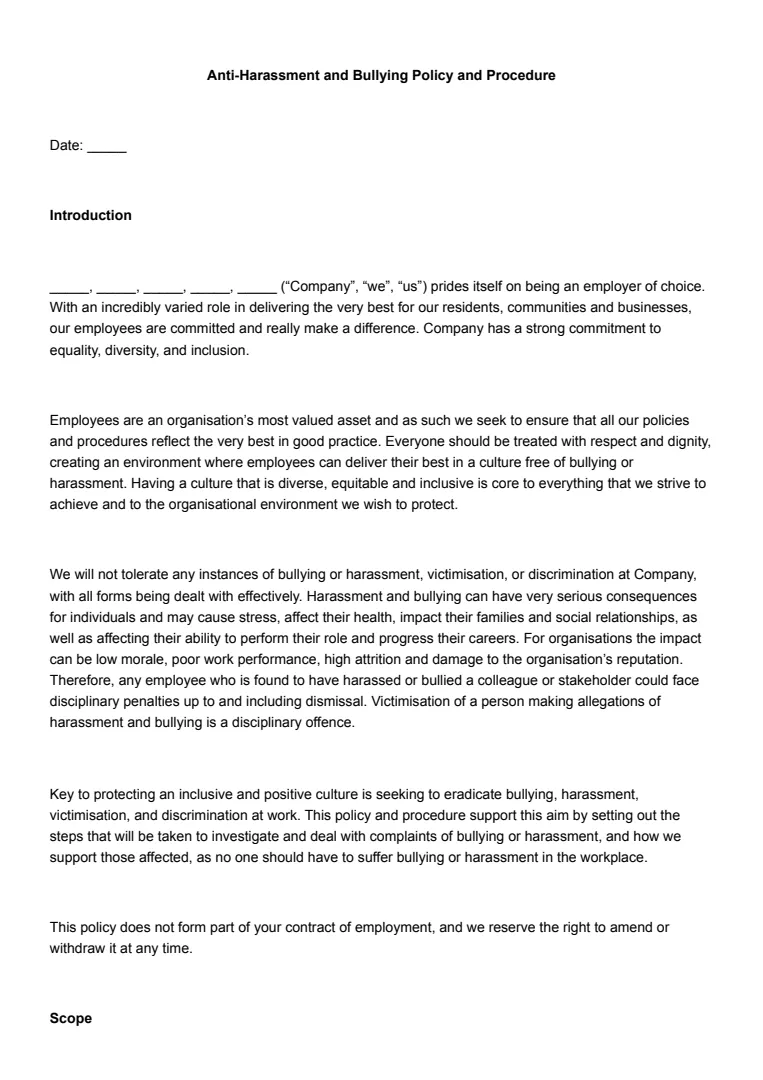What Is a Maternity Policy?
A maternity policy is a set of company guidelines that detail the rights and benefits you get as an employee when you're expecting a child or have just become a parent.
These policies often include both maternity and parental leave, ensuring you have the time needed for recovery and bonding with your child.
You might find that maternity policies at different companies offer various benefits. Some provide paid leave, while others might give a mix of paid and unpaid leave.
It's common for maternity policies to integrate existing benefits like sick leave, annual leave, and holiday time.
In the UK, if you’re legally classed as an employee, you have the right to up to 52 weeks of maternity leave. The law dictates that you must take at least two weeks off work after your child is born (four weeks if you work in a factory).
Some companies go beyond this minimum requirement to offer paid leave or additional perks. Check your company's specific maternity policy to know exactly what benefits you qualify for, ensuring you're fully prepared.
Getting to know your maternity policy is crucial as you plan for your family's future. It helps you understand what support systems are in place and how you can best utilise them to balance work and family life.
Always reach out to your HR department if you need more details or personalised guidance.
When Is a Maternity Policy Needed?
You'll find that having a maternity policy in place is essential for various situations to support both employees and employers.
In the UK, the Employment Rights Act 1996 and the Maternity and Parental Leave Regulations 1999 primarily govern a company’s maternity policy. A pregnant employee is entitled to 52 weeks of maternity leave (ordinary maternity leave for the first 26 weeks and additional maternity leave for the next 26 weeks). These regulatory measures also include protections from discrimination and redundancy, as well as time off for antenatal care.
Maternity policies ensure that employees can take time off to care for a newborn or adopted child, and these become crucial when you want to attract and retain talented employees. Offering maternity leave shows that you value work-life balance, which is a significant aspect for many job seekers today.
It's also important to have a clear policy when establishing consistent guidelines. This helps avoid discrepancies and confusion when different employees take leave. Making sure everyone knows their entitlements fosters a sense of fairness and clarity.
Also, consider implementing maternity leave policies if you aim to boost employee morale. Providing support during such a significant life event helps make your employees feel valued, leading to increased loyalty and productivity when they return to work.
Employing a policy is a good idea if your company wants to stay competitive within your industry. Many companies are enhancing their policies beyond legal requirements to attract top talent.
How to Write a Maternity Policy
When crafting a maternity policy, it's essential to make sure your document addresses all the necessary elements that support both employees and the company.
Here's how you can create your own comprehensive maternity policy. It’s also a good idea to look at enhanced maternity pay examples and maternity leave plan templates as a guide.
Step 1: Start With Eligibility
Identify who qualifies for maternity leave benefits.
Consider factors like employment status and length of service. Make it clear if the policy covers full-time, part-time, and contractual employees.
Step 2: Leave Duration and Benefits
Specify how long the leave will last and any benefits that come with it.
Include details like the starting point of the leave, whether it's fully or partially paid, and any extensions for special circumstances, such as multiple births or adoption.
Step 3: Compliance With Laws
Ensure your policy aligns with government regulations.
Research employment laws and make sure you comply to avoid legal issues. Check in with your HR department to cross-verify compliance.
Step 4: Outline Procedure
Describe the process employees need to follow to request leave.
Include timelines for submission and any necessary documentation. It's helpful to involve your human resources team in shaping procedures to ensure clarity and feasibility.
Step 5: Reintegration Plan
Plan how employees will transition back into work after the leave. Discuss keeping in touch during the leave and any flexible arrangements if needed post-return.
Create strategies with HR for a smooth reintegration that benefits both the employee and employer.













